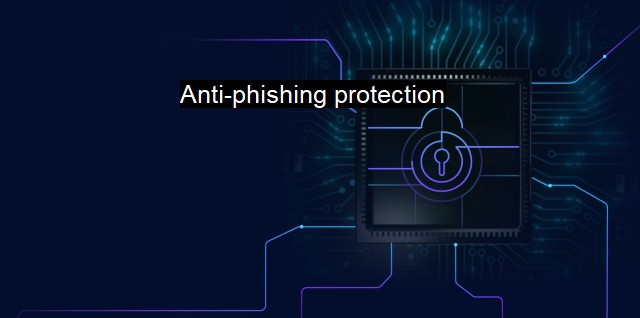What is Anti-phishing protection?
Protecting Personal Information: The Role of Anti-Phishing Technology in Countering Cybercrime
Anti-phishing protection is a key component within the landscape of cybersecurity systems and antivirus software. It refers to services and solutions that identify and neutralize phishing threats. These threats involve attempts by cybercriminals to acquire sensitive data such as usernames, passwords, and credit card details by disguising as a trustworthy entity in an electronic communication.Usually, malicious users conduct phishing attacks predominantly via email. The disguised messages they send often appear official, using branding and language that seems to come from legitimate organizations such as banks, government agencies and popular websites. Redirecting links that appear within these messages often lead unsuspecting users to fake websites that mirror the real ones. Any information entered onto these fake sites typically goes straight to the phishing cybercriminals.
Anti-phishing protection is vital in this digital age, where an increasing number of tasks, communications, and transactions take place online. Without the appropriate protections set in place, individuals and businesses are increasingly vulnerable to data leaks, financial fraud, and privacy compromise which may have devastating effects.
This protection usually stems from multiple approaches. Some methods that are used to implement anti-phishing protection include email filters, website validation, warning systems, and cybersecurity education. Anti-phishing protection from the end-user's perspective usually includes employing and regularly updating trusted antivirus software that incorporates robust anti-phish measures, enabling automatic updates of web browsers and operating systems, and maintaining current backup copies of important data.
Email filtering is amongst the earliest methods of anti-phishing and serves as the first line of defense. Filters analyze incoming emails, checking for signs that indicate the potential for phishing, such body text including certain keywords, unusual sentence structure, incorrect email addresses or irregularities within the email headers. If an email is identified as a potential phishing attack, filters will typically place the email in a segregated folder or quarantine it, reducing the chances of end-user interaction with it.
Website validation techniques, like the use of SSL certificates, are also instrumental in maintaining secure communications and authentications. To fend off attacks, web browsers and antivirus software are once again vital tools that, when updated, provide alerts whenever users try to visit potentially dangerous, uncertified or suspicious websites.
Technical solutions alone cannot serve as a complete protective measure against phishing. This is where cybersecurity education comes into play, forming a pivotal part of anti-phishing protection. Awareness among internet users regarding such potential scams and understanding how to identify suspicious activities is the critical final line of defense. Organizations have a role to play here, as regular training and information updates can greatly help in equipping their workforce or users to identify and respond suitably to phishing scenarios.
Another vital aspect is the role of artificial intelligence and machine learning in phishing threat detection. These technologies are progressively being integrated into antivirus software and can predict and protect against potential phishing attacks based on learnt patterns.
Combining all of these aspects allows for comprehensive anti-phishing protection. Remaining vigilant against phishing attacks is a continual process that requires regular software updates, continuous user education, and constant awareness. It is with the integration of these behaviors and actions that provide users the best chance to ward off potential phishing exploits. in the ever-changing field of cybercrime, nothing provides a completely foolproof safeguard. Vigilance, coupled with technical advancements, prudent internet habits, and awareness, is the best way forward for anti-phishing protection. After all, the most effective cybersecurity plan is the one that anticipates attacks before they happen, rather than one that simply reacts to them.

Anti-phishing protection FAQs
What is anti-phishing protection?
Anti-phishing protection is a cybersecurity technique that helps prevent phishing attacks. It involves using software or tools that can detect and block suspicious emails, websites, or messages designed to steal sensitive information or credentials.Why is anti-phishing protection important?
Anti-phishing protection is important because phishing attacks are one of the most prevalent types of cyber threats. They target individuals, businesses, and organizations by tricking them into providing confidential information, such as login credentials, credit card details, or personal data. Anti-phishing protection helps to mitigate such risks by preventing or minimizing the impact of phishing attacks.What are the key features of anti-phishing protection?
The key features of anti-phishing protection include email filters, web filters, URL scanning, anti-virus/malware protection, behavioral analysis, and real-time monitoring. These features work together to detect and block phishing attacks, prevent users from accessing malicious websites, and alert administrators or security teams of any suspicious activity.How effective is anti-phishing protection?
The effectiveness of anti-phishing protection depends on the quality and sophistication of the tools or software used. Generally, anti-phishing protection can significantly reduce the risk of successful phishing attacks, but it cannot guarantee 100% protection. Cybercriminals are constantly evolving their tactics and techniques, and some attacks can still bypass even the most advanced anti-phishing solutions. Therefore, it is important to complement anti-phishing protection with other cybersecurity measures, such as user education and awareness, regular software updates, and data backup.| | A | | | B | | | C | | | D | | | E | | | F | | | G | | | H | | | I | | | J | | | K | | | L | | | M | |
| | N | | | O | | | P | | | Q | | | R | | | S | | | T | | | U | | | V | | | W | | | X | | | Y | | | Z | |
| | 1 | | | 2 | | | 3 | | | 4 | | | 7 | | | 8 | | |||||||